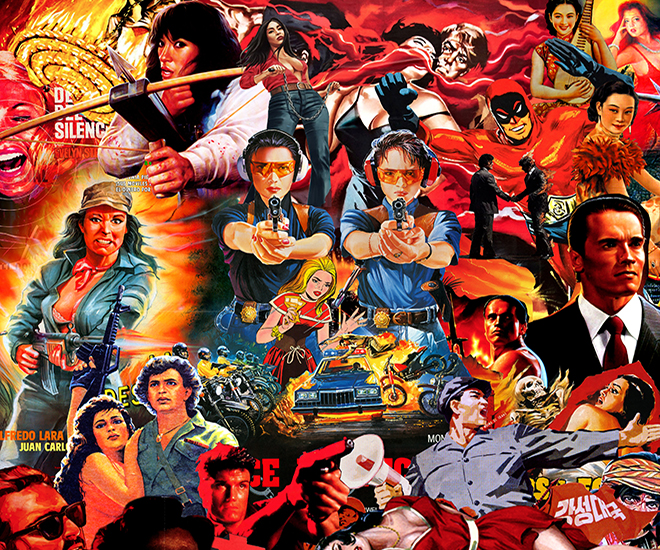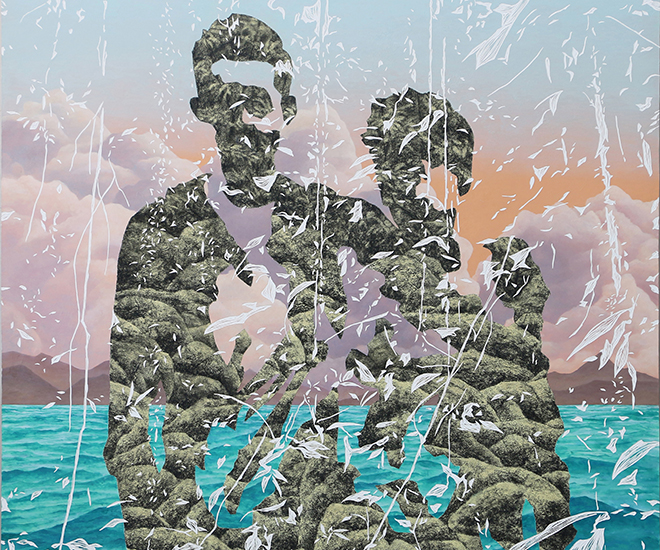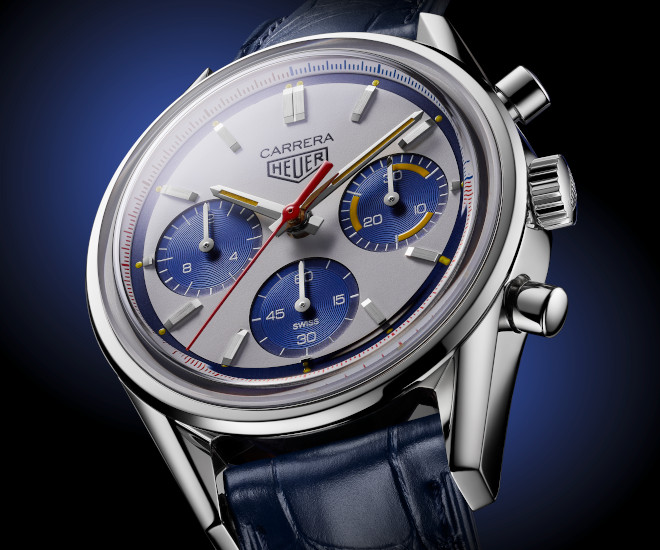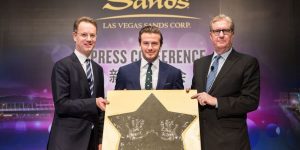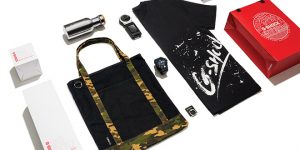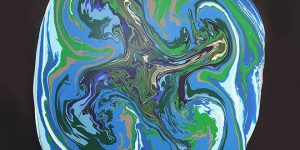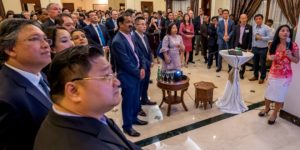Exhibition at The Culture Story: ‘Genesis: God’s Terrarium’ by Jahan Loh
Contemporary artist Jahan Loh investigates the genesis of mankind

Jahan Loh. Image courtesy Melvin Wong and The Culture Story.
After a four-year hiatus, Singapore contemporary artist Jahan Loh presents his newest solo exhibition, ‘Genesis: God’s Terrarium’ at The Culture Story from 17 January to 18 March 2018. Best known for his iconic pop-art depiction of the iconic can of Ma Ling brand pork luncheon meat, Loh’s unique visual language has led to his reputation as one of the pioneers of Singapore’s pop art scene.
Loh’s style bears heavy influences from pop and street culture, blending regular brush techniques with spray paint and thick, black outlines, a feature borrowed from comic books, which he cites as a major influence. “As a child, I was raised on a diet of pop culture,” says Luo. “Comics, science fiction, movies from the 70s and 80s, a lot of Star Wars and Battlestar Galactica, and even Japanese anime and heavy metal. So today, when I look at certain things — historical and biblical texts, for example — they don’t manifest in my mind as Renaissance paintings, with classic depictions of archangels. Instead, I envision them in a very sci-fi way.”

Jahan Loh and in-progress sculpture. Image courtesy Melvin Wong and The Culture Story.
As a young adult, Loh was accepted into law school, but dropped out to pursue fine art at LASALLE College of the Arts under a scholarship from Singapore Press Holdings. However, he explains that while studying art, he ended up feeling suppressed and restricted.
“I didn’t really like being taught how to paint,” admits Loh. “Before entering art school, I thought that art was something liberating and free. But when I entered art school, I realised that wasn’t the case. I was taught how to paint in a certain style, but what I really wanted was to make it my own.”

Jahan Loh, ‘Genesis: God’s Terrarium — EDEN VII’, 2017. Image courtesy Melvin Wong and The Culture Story.
And his own it certainly is. From aliens and intergalactic superheroes to his tongue-in-cheek artworks in his ‘Cherry Poke’ series featuring familiar, nostalgic labels on canned food in Singapore, his style is distinctive and bold, paying little heed to conventions and even less to expectations. His rendering of the can of luncheon meat, for example, is a personal interpretation of the Singaporean culture, chopped into bits and pieces, seasoned and salted, and assembled into a single block. “But in the end, it still tastes like pork,” Loh quips.
It comes as no surprise that Loh’s latest exhibition bears the same surprising, almost outlandish creativity that is his trademark. Featuring eight new paintings depicting the legendary Garden of Eden and a larger-than-life sculpture of the exhibition’s central characters, Adam and Eve, the project delves deep into the topic of existentialism, questioning the origins of humanity through the book of Genesis.

“Adam and Eve” the larger-than-life-sized sculpture. Image Courtesy of Melvin Wong and The Culture Story.
“It’s essentially my response to the current, almost apocalyptic state of the world,” explains the artist. “How did we bring about our own downfall? The human species is forgetful, after all. In Singapore, we can barely remember our roots, and it’s only been a few generations. So I tried to trace human history back a few thousand years to return to the original question — ‘Where did we come from?’”
In the exhibition, Loh calls the earth “God’s terrarium”, creating an alternate universe where human beings are aliens, placed on the earth as a test of sorts. Fusing religious iconography from the Renaissance with science-fiction, pop-art influences, Loh challenges audiences to consider ideas of good and evil as raised in Genesis. “The story of Adam and Eve is about morality,” says Loh. “Knowledge lets us do good, but at the same time it gives us the power to create weapons. Could knowledge be our downfall after all?”
More information at theculturestory.co.
This article was written by Ilyda Chua for Art Republik Issue 17.
